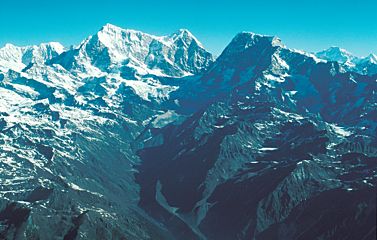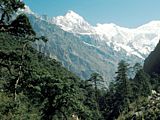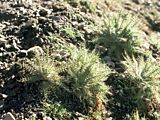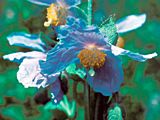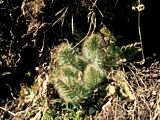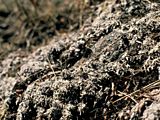Himalayas: Langtang (Nepal)
The roof of the world, situated at the northern edge of the subtropical zone, offers transects from monsoonal forests to the world of everlasting snow. The montane and alpine belts of the Hindukush-Himalaya regions represent a several thousand kilometers E-W bridge for plant migration, hence are very rich in taxa. All examples shown here are from Nepal. The time of year when most of the pictures were taken (May) was too early for the alpine flora (still snow at treeline at 4000 m).
2 -
The 7000 m peaks in the Langtang valley as seen from the
Tsuga dumosa
(Pinaceae)/
Quercus semecarpifolia
(Fagaceae) forest at 2700 m elevation.
5 -
Meconopsis betonicifolia
(Papaveraceae), the famous blue Himalayan poppy, native to the E-Himalayan, Tibet, Yunnan
(3100-4000 m) (picture taken in a garden).
